Emilie Sagee, a 19th-century woman who struggled every day through her life to escape from her own Doppelganger, whom she couldn’t see at all, but others could!
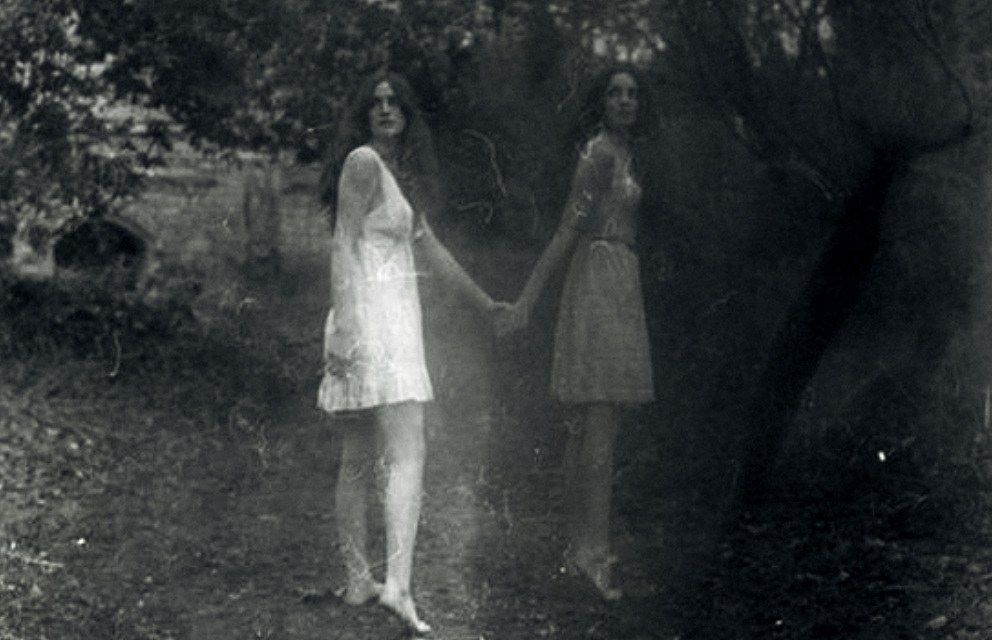
Cultures all around the world believe in spirits that survive death to live in another realm, an otherworld that is said to hold the answers for many unexplained phenomena that occur in our real world. From haunted houses to cursed suicide spots, ghosts to ghouls, witches to wizards, the paranormal world has left behind thousands of unanswered questions for intellectuals. In all of them, doppelganger acquires a significant role that has been baffling humans for the past few centuries.
What Is Doppelganger?
The term “doppelgänger” is nowadays often used in a more general and neutral sense to describe any person who physically resembles another person, but that is a misuse of the word in some sense.
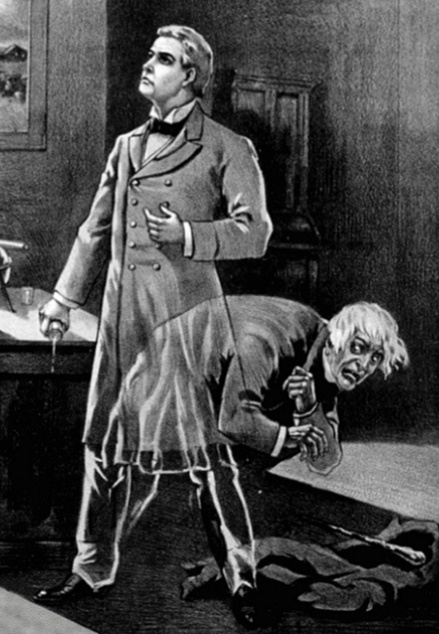
A doppelganger refers to an apparition or a double-walker of a living person. It is not just someone who looks like someone else, but a precise reflection of that person, a spectral duplicate.
Other traditions and stories equate a doppelgänger with an evil twin. In modern times, the term twin stranger is occasionally used for this.
Definition For Doppelganger:
Doppelgänger is a ghostly or paranormal phenomenon where a non-biologically related look-alike or double of a living person appears usually as a harbinger of bad luck. To simply say, doppelgänger or doppelganger is a paranormal double of a living person.
Doppelganger Meaning:
The word “doppelgänger” has come from the German word “dɒpəlɡɛŋər” which literally means “double-goer.” “Doppel” signifies “double” and “ganger” signifies “goer.” A person who attends a specified place or event, especially on a regular basis is called “goer.”
A doppelgänger is an apparition or ghostly double of a living person who attends a specified place or event, especially on a regular basis.
The Strange Case Of Emilie Sagee:
The case of Emilie Sagee is one of the eeriest cases of doppelganger that comes from the early nineteenth century. Her story was first told by Robert Dale-Owen ក្នុង 1860 ។
Robert Dale-Owen was born in Glasgow, Scotland on November 7, 1801. Later in 1825, he emigrated to the United States and became a US citizen, where he continued his សប្បុរសធម៌ ការងារ។
During the period of 1830s and 1840s, Owen spent his life as a successful politician and a renowned social activist as well. By the late 1850s, he took retirement from politics and converted himself to spiritualism, like his father.
His first publication on the subject was a book titled “Footfalls on the Boundary of Another World,” which included the tale of Emilie Saget, the French woman who is commonly known to us as Emilie Sagee. The book was published in 1860 and the story of Emilie Sagee was cited in a chapter in this book.
Robert Dale-Owen himself heard the story from Julie von Güldenstubbe, daughter of Baron von Güldenstubbe, who attended the elite boarding school Pensionat von Neuwelcke in the year 1845, in present-day Latvia. This is the school in which 32-year-old Emilie Sagee once joined as a teacher.
Emilie was attractive, smart, and in general admired by the students and fellow staff of the school. However, one thing was curiously strange about Emilie that she had already been employed in 18 different schools in the past 16 years, Pensionat von Neuwelcke being her 19th workplace. Slowly, the school began to realize why Emilie couldn’t keep her position in any of the jobs for a long time.
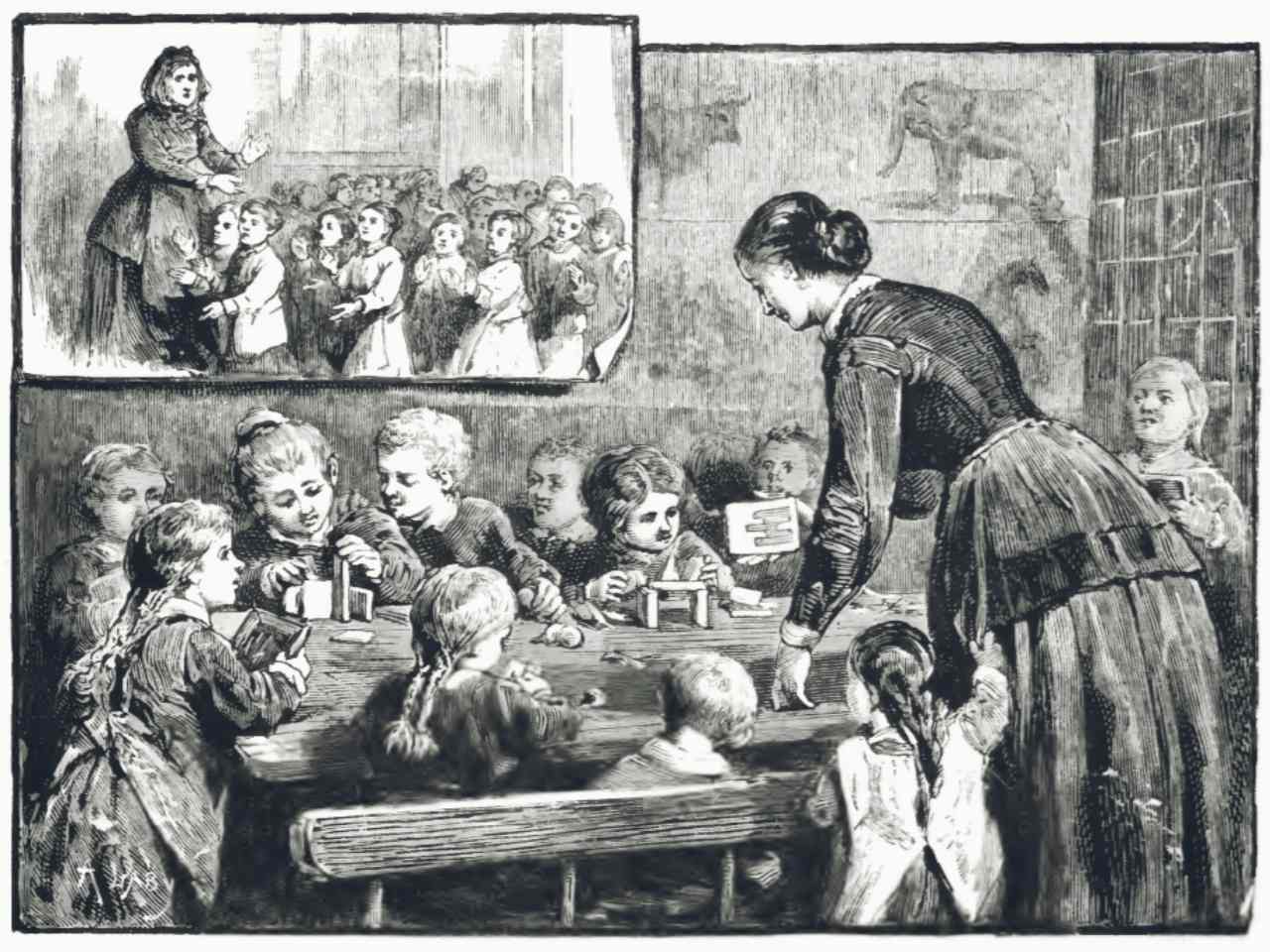
Emilie Sagee had a doppelganger—a ghostly twin—that would make itself visible to others at unpredictable moments. The first time it was spotted was when she was giving lessons in a class of 17 girls. She had been normally writing on the board, her back facing the students, when out of nowhere a projection like entity that looked just like her appeared. It stood right beside her, mocking her by imitating her movements. While everyone else in the class could see this doppelganger, Emilie herself could not. In fact, she never came across her ghostly twin which was actually good for her because seeing one’s own doppelganger is considered to be an extremely ominous event.
Since the first sighting, Emilie’s doppelganger was spotted quite frequently by others at the school. It was seen sitting beside the real Emilie, eating silently while Emilie ate, imitating while she did her everyday work and sitting in class while Emilie taught. One time, as Emilie was helping one of her little students dress up for an event, the doppelganger appeared. The student, as she looked down to suddenly find two Emilies fixing her dress. The incident scared her terribly.
The most talked-about sighting of Emilie was when she was seen gardening by a class full of 42 girls, who were learning sewing. When the supervisor of the class walked out for a bit, Emilie walked in and sat down in her place. The students didn’t think much of it until one of them pointed out that Emilie was still in the garden doing her work. They must have been terrified by the other Emilie in the room, but some of them were brave enough to go and touch this doppelganger. What they found was that their hands could go through her ethereal body, only sensing what seemed like a bulk of cobweb.
When asked about this, Emilie herself was totally shocked. She had never witnessed this twin of her body which was haunting her for a long time and the worst part was Emilie had no control over it. Because of this spectral duplicate, she had been asked to leave all her previous jobs. Even this 19th job of her life seemed to be in peril because seeing two Emilies at the same time was naturally freaking people out. It was like an eternal curse to Emilie’s life
Many parents had started to caution their children out of the institution and some even complained about this to the school authority. We are talking about the early 19th century so you could understand how people were bound to such superstitions and the fear of the dark at that time. Therefore, the principal reluctantly had to let Emilie go, despite her diligent nature and capabilities as a teacher. The same thing Emilie had already faced several times before.
According to accounts, while Emilie’s doppelganger made itself visible, the actual Emilie appeared very worn out and lethargic as if the duplicate was a part of her elemental spirit that escaped from her material body. When it disappeared, she was back to her normal state. After the incident at the garden, Emilie said that she had had an urge to go inside the classroom to supervise the kids herself but hadn’t actually done it. This indicates that the doppelganger perhaps was a reflection of the kind of teacher Emilie wanted to be, doing multiple tasks at once.
Since then, two centuries have passed, but the case of Emilie Sagee is still talked about everywhere being the most fascinating yet frightening story of doppelganger in history. It definitely makes one wonder if they too have a doppelganger that they are not aware of!
However, author Robert Dale-Owen didn’t mention anywhere what happened to Emilie Sagee afterwards, or how Emilie Sagee had died. In fact, no one knows much about Emily Sagee rather than the story that Owen cited briefly in his book.
Criticisms Of Emilie Sagee’s Fascinating Story:
Actual cases of doppelgangers are quite rare in history and Emilie Sagee’s story is probably the scariest of them all. However, many have questioned the precision and legitimacy of this story.
According to them, information about the school Emilie taught at, location of the city where she had lived, people’s names in the book and Emilie Sagee’s whole existence were all contradictory and suspicious on the basis of the timeline.
Though there is at least, historical evidence that a family named Saget (Sagee) did live in Dijon in the correct period, there is no such conclusive historical proof to legitimate Owen’s story.
Furthermore, Owen even didn’t witness the events himself, he just heard the story from a lady whose father had witnessed all these strange things about 30 years ago from the time.
Therefore, there is also always the possibility that with over three decades passing between the original events and her relaying the story to Dale-Owen, time simply eroded her memory and she mistakenly gave some incorrect details about Emilie Sagee entirely innocently.
Other Famous Stories Of Doppelgangers From History:
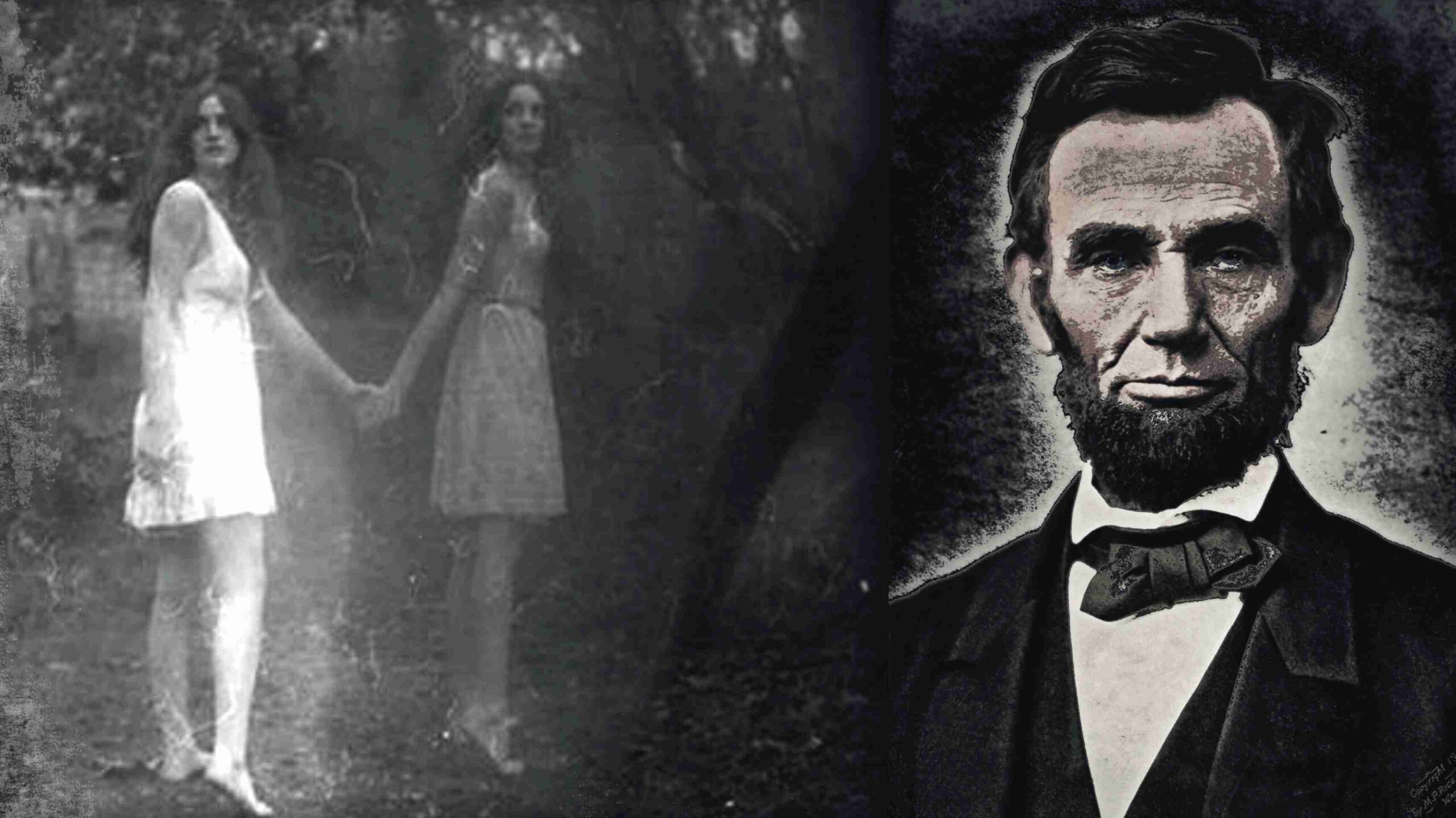
In fiction, the doppelganger has been used as both a climax to frighten readers and spiritualism involving the strange human conditions and states. From the Ancient Greeks to ដូស្តូយវស្គី, ពី Edgar Allan Poe ។ ទៅខ្សែភាពយន្តដូចជា ប្រយុទ្ធប្រឆាំងនឹងក្លឹប និង ទ្វេ⊕, all have taken the fascinatingly odd doppelganger phenomenon in their stories over and again. Depicted as evil twins, foreshadowings of the future, metaphorical representations of human duality and simple apparitions with no apparent intellectual qualities, the tales cover a broad spectrum.
In Ancient Egyptian mythology, a ka was a tangible “spirit double” having the same memories and feelings as the person to whom the counterpart belongs. Greek mythology also represents this Egyptian view in the សង្រ្គាមផែ្នក in which a ka of លោកស្រី Helen បំភាន់ Paris the prince of Troy, helping to stop the war.
Even, a few of the most famous and powerful real-life historical figures have been known to have had apparitions of themselves appear. Some of them are cited below:
អាប្រាហាំលីនខុន៖
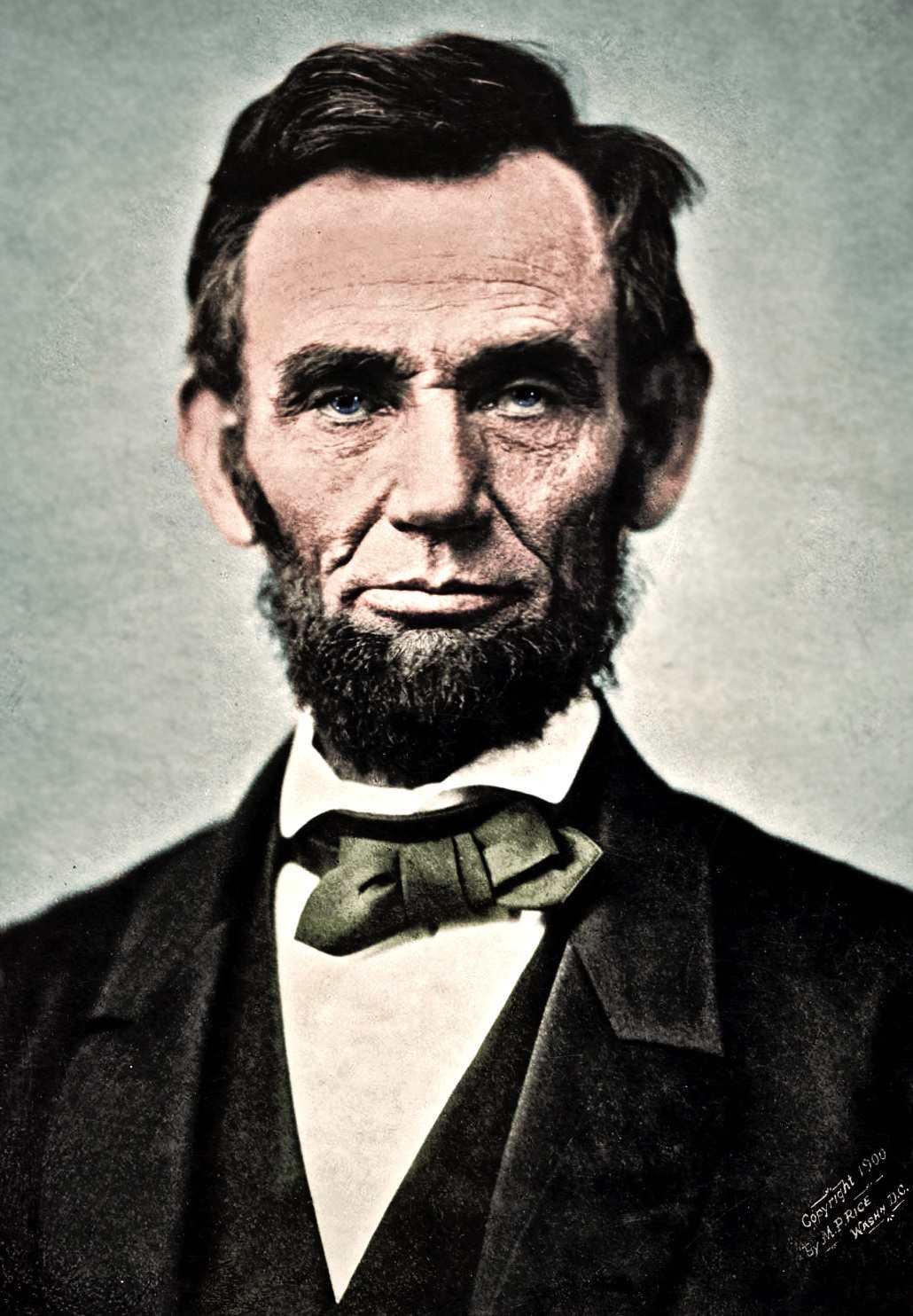
នៅក្នុងសៀវភៅនេះ "Washington in Lincoln’s Time, " published in 1895, the author, Noah Brooks recounts a strange story as told directly to him by លោក Lincoln ខ្លួនគាត់:
“It was just after my election in 1860 when the news had been coming in thick and fast all day and there had been a great “hurrah, boys,” so that I was well tired out, and went home to rest, throwing myself down on a lounge in my chamber. Opposite where I lay was a bureau with a swinging glass upon it (and here he got up and placed furniture to illustrate the position), and looking in that glass I saw myself reflected nearly at full length; but my face, I noticed had two separate and distinct images, the tip of the nose of one being about three inches from the tip of the other. I was a little bothered, perhaps startled, and got up and looked in the glass, but the illusion vanished. On lying down again, I saw it a second time, plainer, if possible, than before; and then I noticed that one of the faces was a little paler — say five shades — than the other. I got up, and the thing melted away, and I went off, and in the excitement of the hour forgot all about it — nearly, but not quite, for the thing would once in a while come up, and give me a little pang as if something uncomfortable had happened. When I went home again that night I told my wife about it, and a few days afterward I made the experiment again, when (with a laugh), sure enough! the thing came back again; but I never succeeded in bringing the ghost back after that, though I once tried very industriously to show it to my wife, who was somewhat worried about it. She thought it was a “sign” that I was to be elected to a second term of office, and that the paleness of one of the faces was an omen that I should not see life through the last term.”
ម្ចាស់ក្សត្រីអេលីសាបិត៖
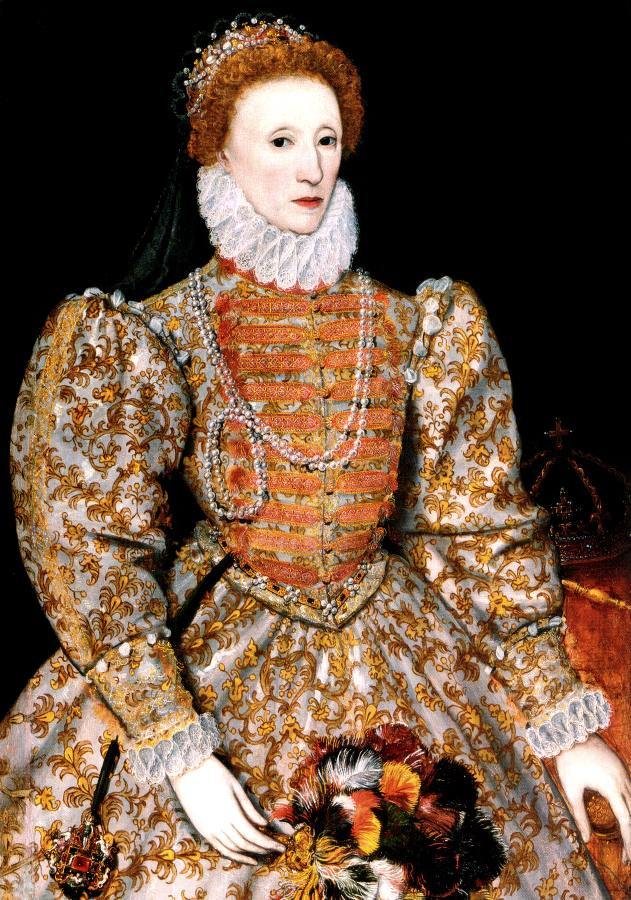
Queen Elizabeth the first, too, was said to have witnessed her own doppelganger lying motionless beside her whilst she was on her bed. Her lethargic doppelganger was described as “pallid, shivered and wan”, which shocked the Virgin Queen.
Queen Elizabeth-I was known to be calm, sensible, strong of will, who didn’t have much faith in spirits and superstition, but still she knew that folklore considered such an occurrence a bad sign. She died shortly thereafter in 1603.
Johann Wolfgang Von Goethe:
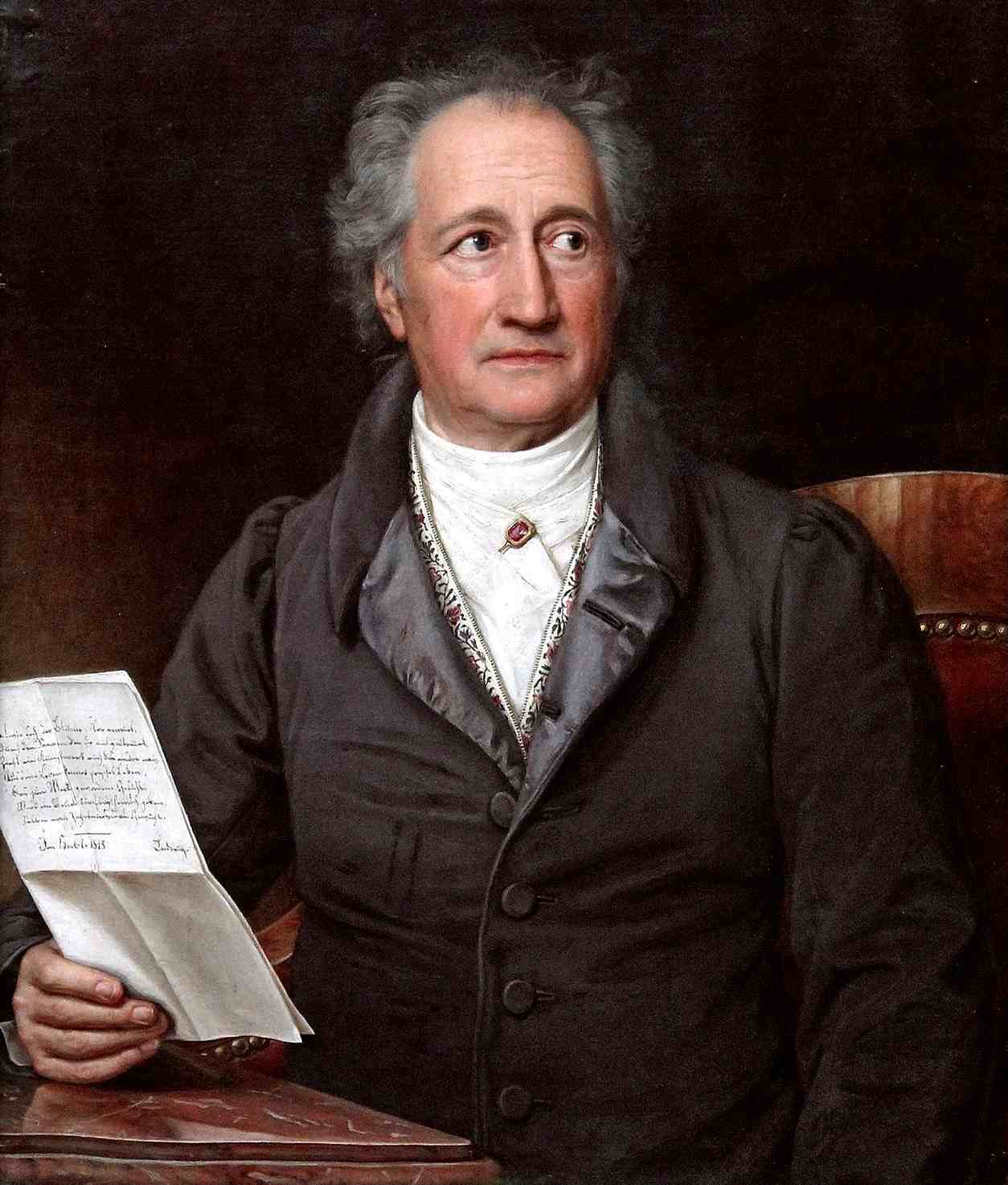
Writer, poet and politician, the German genius ចូហានវ៉ូហ្គោហ្គនវ៉នហ្គេតធី។ was one of the most respected figures in Europe in his day, and still is. Goethe encountered his doppelganger as he was riding home on a road after visiting a friend. He noticed there was another rider approaching from the other direction toward him.
As the rider got closer, Goethe noticed that it was himself on the other horse but with different clothes. Goethe described his encounter as “soothing” and that he saw the other with his “mind’s eye” more than with his actual eyes.
Years later, Goethe was riding down the same road when he realized he was wearing the same clothes as the mysterious rider he had encountered years before. He was on his way to visit the same friend he had visited that day.
Catherine The Great:
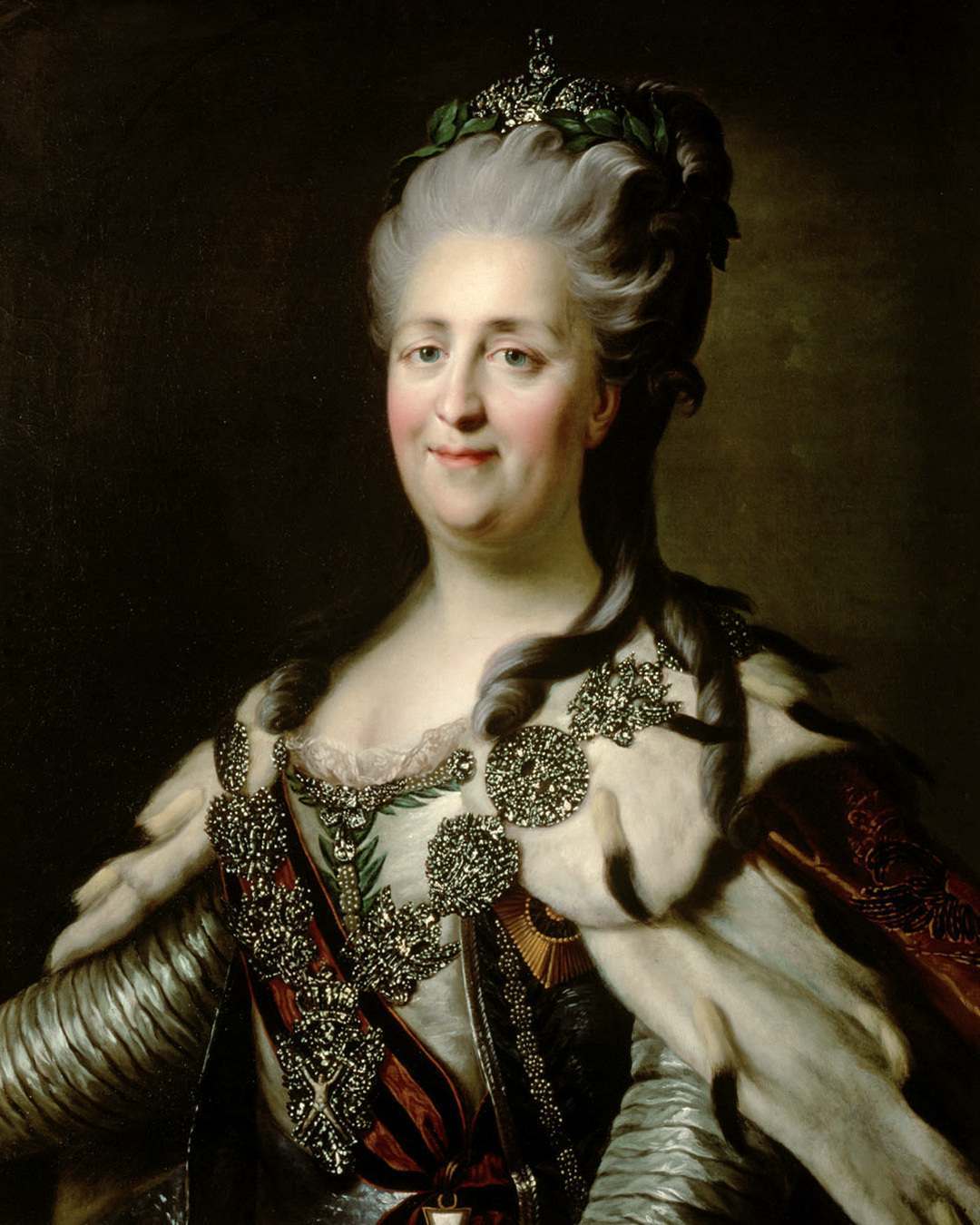
The Empress of Russia, ខាធើរីនមហា, was awakened one night by her servants who were surprised to see her in her bed. They told the ស៊ីហ្សារីណា that they had just seen her in the throne room. In disbelief, Catherine proceeded to the throne room to see what they were talking about. She saw herself sitting on the throne. She ordered her guards to shoot at the doppelganger. Of course, the doppelganger must have been unscathed, but Catherine died of a stroke just weeks after that.
Percy Bysshe Shelley:
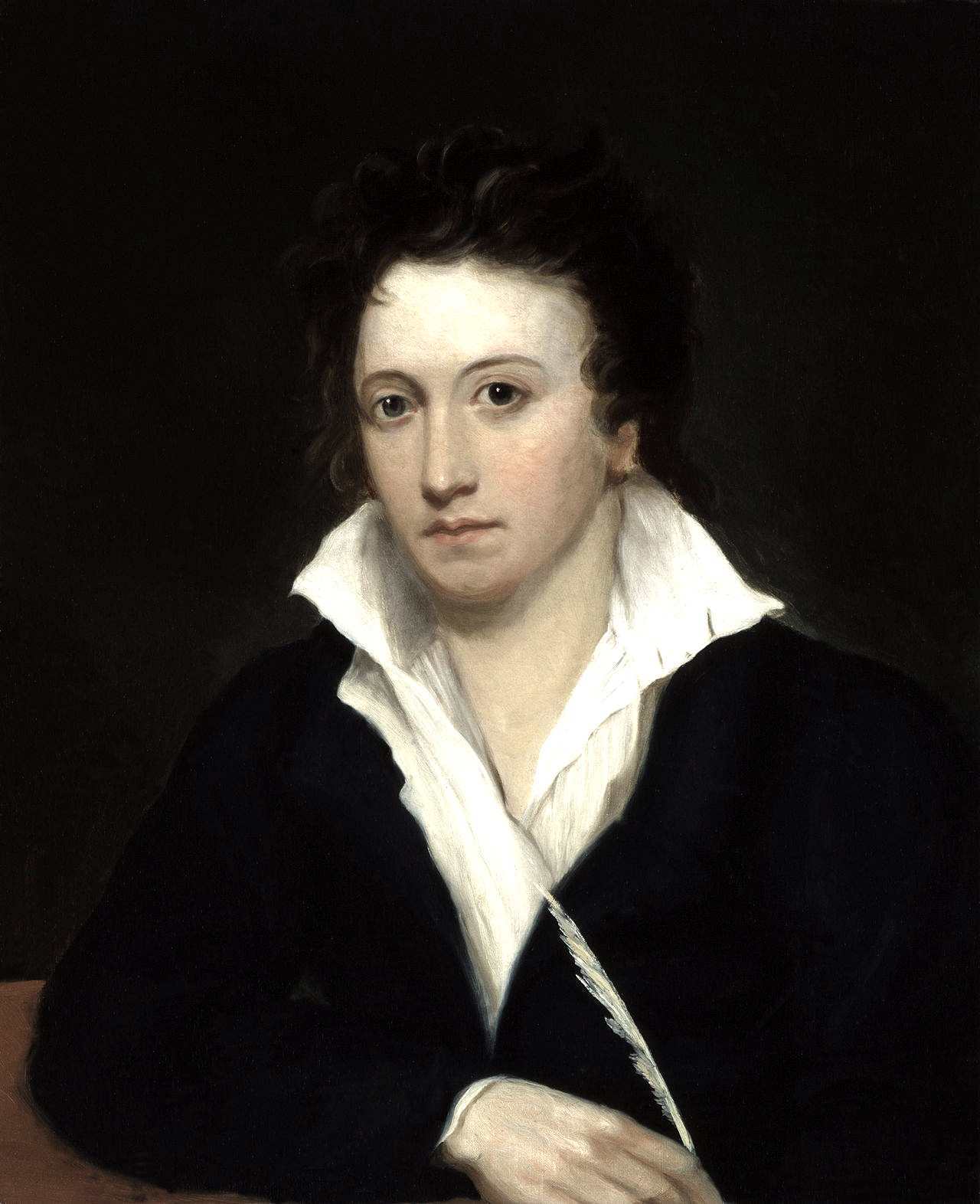
The famed English romantic poet ភឺសប៊ីស្សីសាឡី, the husband of the writer of Frankenstein, Mary Shelley, claimed to have seen his doppelganger several times during his lifetime.
He encountered his doppelganger on the terrace of his house as he was strolling. They met halfway and his double said to him: “how long do you mean to be content.” Shelley’s second encounter with himself was on a beach, the doppelganger pointing to the sea. He drowned in a sailing accident in 1822 not long after that.
The story, retold by ម៉ារីសេឡី after the poet’s death, is given more credibility when she recounts how a friend, ជេនវីលៀម, who had been staying with them also came across Percy Shelley’s doppelganger:
“…But Shelley had often seen these figures when ill, but the strangest thing is that Mrs. Williams saw him. Now Jane, though a woman of sensibility, has not much imagination, and is not in the slightest degree nervous, neither in dreams or otherwise. She was standing one day, the day before I was taken ill, at a window that looked on the Terrace, with Trelawny. It was day. She saw as she thought Shelley pass by the window, as he often was then, without a coat or jacket. He passed again. Now, as he passed both times the same way, and as from the side towards which he went each time there was no way to get back except past the window again (except over a wall twenty feet from the ground), she was struck at seeing him pass twice thus, and looked out and seeing him no more, she cried, “Good God can Shelley have leapt from the wall? Where can he be gone?” “Shelley,” said Trelawny “no Shelley has passed. What do you mean?” Trelawny says that she trembled exceedingly when she heard this, and it proved, indeed, that Shelley had never been on the terrace, and was far off at the time she saw him.”
Did you know Mary Shelley kept a remaining part of Percy’s body after his cremation in Rome? After Percy’s tragic death at the age of only 29, Mary kept the part in her drawer for almost 30 years until she died in 1851, thinking it was her husband’s heart.
George Tryon:
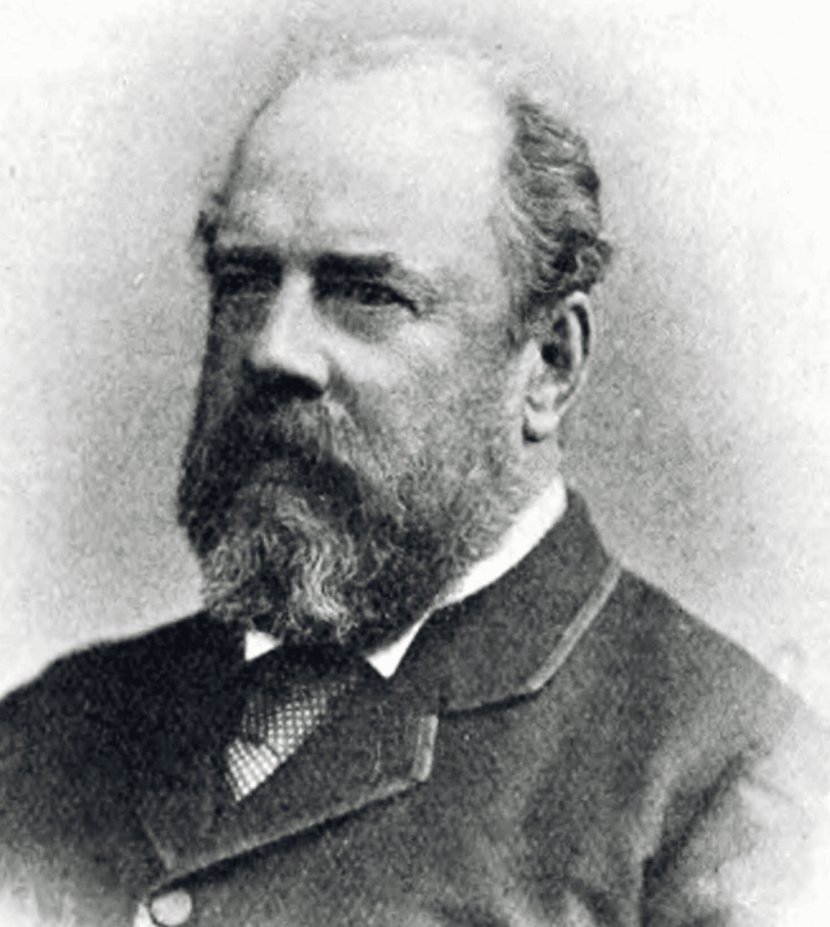
អនុសេនីយ៍ឯក George Tryon has been discredited in history for a brash and unsound maneuver that caused the collision of his ship, the HMS Victoria, and another, the HMS Camperdown, off the coast of Lebanon taking lives of 357 sailors and himself. As his ship was quickly sinking, Tryon exclaimed “it’s all my fault” and took all responsibilities for the grave error. He drowned in the sea along with his men.
At the same time, thousands of miles away in London, his wife was giving a luxurious party at their home for friends and the London elite. Many guests at the party claimed to see Tryon dressed in full uniform, descending the stairs, walking through some of the rooms and then quickly exiting through a door and vanishing, even as he was dying in the Mediterranean. The next day, the guests that had witnessed Tyron at the party were utterly shocked when they learned of the Vice-Admiral’s death in the African Coast.
Guy de Maupassant:
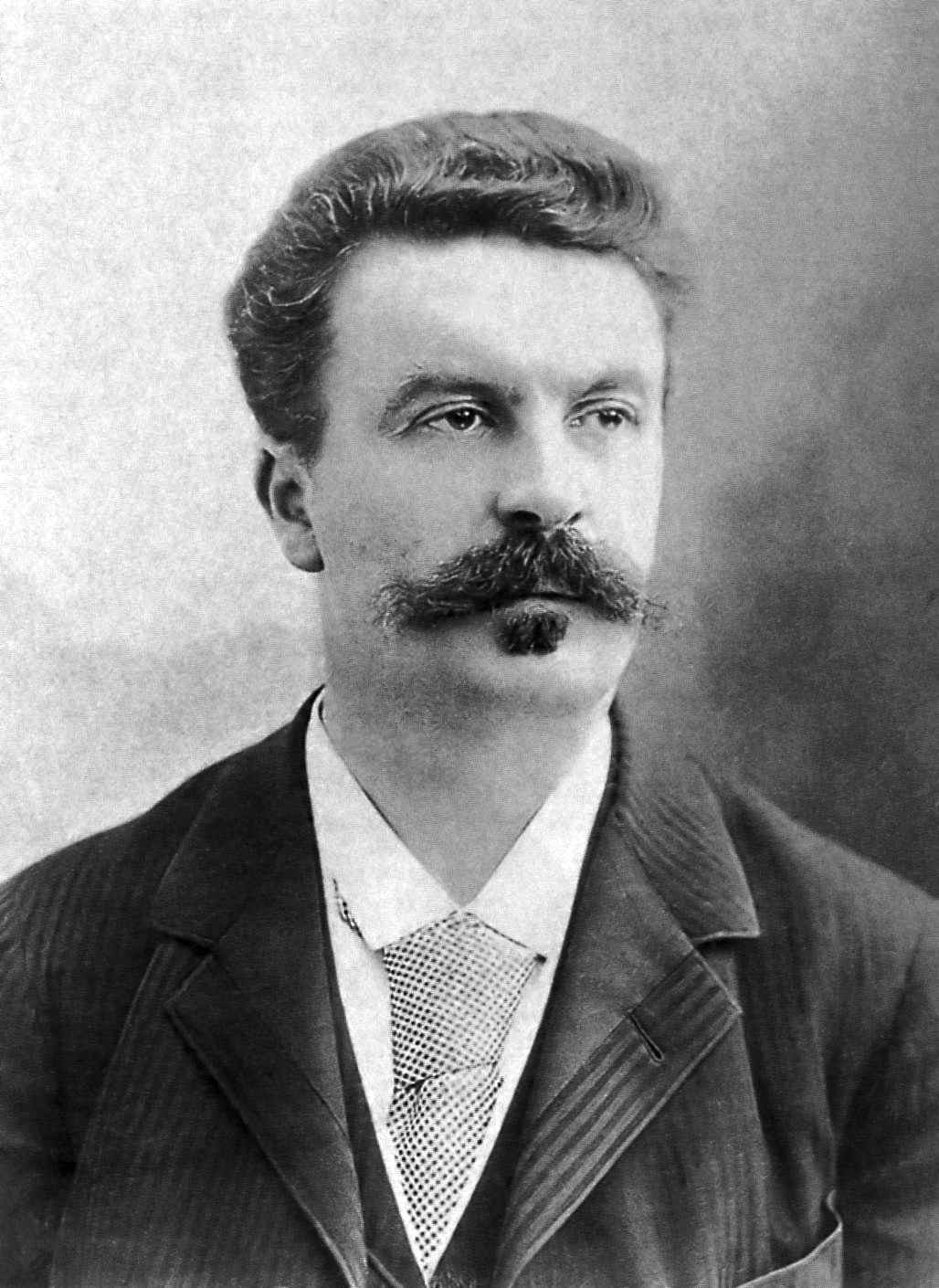
អ្នកនិពន្ធប្រលោមលោកបារាំង Guy de Maupassant was inspired to write a short story called “Lui?”―that literally means “He?” in French―after a disturbing doppelganger experience in 1889. While writing, de Maupassant claimed that his body double entered his study, sat beside him, and even began dictating the story he was in the process of writing.
In the story “Lui?”, the narrative is told by a young man who is convinced that he is going insane after having glimpsed what appears to be his spectral double. Guy de Maupassant claimed to have had numerous encounters with his doppelganger.
The most strange part of de Maupassant’s life was that his story, “Lui?” proved somewhat prophetic. At the end of his life, de Maupassant was committed to a mental institution following a suicide attempt in 1892. The following year, he died.
On the other hand, it has been suggested that de Maupassant’s visions of a body double may have been linked to mental illness caused by syphilis, which he contracted as a young man.
The Possible Explanations Of Doppelganger:
Categorically, there are two types of explanations for doppelganger that intellectuals put forth. One type is based on paranormal and parapsychological theories, and another type is based on scientific or psychological theories.
Paranormal And Parapsychological Explanations Of Doppelganger:
Soul Or Spirit:
In the realm of the paranormal, the idea that one’s soul or spirit can leave the material body at will is likely older than our ancient history. According to many, the doppelganger is proof of this ancient paranormal belief.
Bi-Location:
In the psychic world, the idea of Bi-Location, whereby one projects an image of their physical body to a different location at the same time is also as old as the doppelganger itself, which could also be a reason behind doppelganger. To say, “Bi-Location” and “Astral Body” are linked to each other.
រាងកាយ Astral:
In esotericism to describe an intentional Out-of-body experience (OBE) that assumes the existence of a soul or consciousness called an “រាងកាយ Astral” that is separate from the physical body and capable of travelling outside it throughout the universe.
អូរ៉ា:
Some think, doppelganger could also be a result of an aura or human energy field, which is, according to parapsychological explanations, a coloured emanation said to enclose a human body or any animal or object. In some esoteric positions, the aura is described as a subtle body. Psychics and holistic medicine practitioners often claim to have the ability to see the size, colour and type of vibration of an aura.
Parallel Universe:
Some people have a theory that someone’s doppelganger comes out to do the tasks that the person himself was doing in an alternate universe, where she had made a choice different from that of this real world. It’s suggesting that doppelgangers are simply people who exist in សកលប៉ារ៉ាឡែល.
Psychological Explanations Of Doppelganger:
Autoscopy:
In human psychology, Autoscopy is the experience in which an individual perceives the surrounding environment from a different perspective, from a position outside of his or her own body. Autoscopic experiences are ភាពមមាញឹក occurred very close to the person who hallucinates it.
Heautoscopy:
Heautoscopy is a term used in psychiatry and neurology for the hallucination of “seeing one’s own body at a distance.” The disorder is closely related to Autoscopy. It can occur as a symptom in ជម្ងឺវិកលចរិក និង ជំងឺឆ្កួតជ្រូក, and is considered a possible explanation for doppelganger phenomena.
Mass Hallucination:
Another convincing psychological theory for doppelganger is Mass Hallucination. It is a phenomenon in which a large group of people, usually in physical proximity to each other, all experience the same hallucination simultaneously. Mass hallucination is a common explanation for mass UFO sightings, appearances of the Virgin Maryនិងផ្សេងៗទៀត paranormal phenomena.
In most cases, mass hallucination refers to a combination of suggestion and paeidolia, wherein one person will see, or pretend to see, something unusual and point it out to other people. Having been told what to look for, those other people will consciously or unconsciously convince themselves to recognize the apparition, and will in turn point it out to others.
សេចក្តីសន្និដ្ឋាន:
Since the beginning, people and cultures from all around the world have been trying to theorize and explain the doppelganger phenomena in their own perceptive ways. However, these theories do not explain in such a way that could convince everyone to disbelieve all the historical cases and claims of doppelgangers. A paranormal phenomenon or a ជំងឺផ្លូវចិត្ត, whatever it is, the doppelganger is always considered as one of the most mysterious bizarre experiences in human life.




